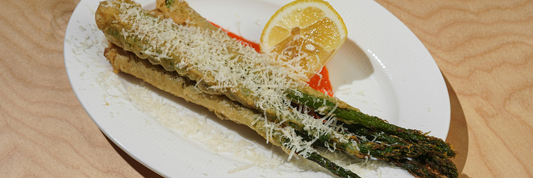Laminated foil is a high-performance packaging material that combines the protective qualities of aluminum foil with additional layers such as plastic or paper, creating a durable, multi-functional barrier. This advanced structure offers exceptional resistance against moisture, oxygen, light, and contaminants, making it ideal for preserving the freshness and quality of food, pharmaceuticals, and other sensitive products. As industries seek more reliable and flexible packaging solutions, laminated foil stands out for its strength, versatility, and ability to support extended shelf life.
-
Top 4 Types of Paper Used in Paper Bowl Production
-
Foil Lined Coffee Bags: Benefits, Environmental Impact, and Sustainable Alternatives
-
List of Materials Used in Flexible Packaging
What is Laminated Foil?

Laminated foil is a versatile material widely used in packaging and other applications due to its enhanced durability and barrier properties. Essentially, laminated foil consists of layers of various materials, typically aluminum foil combined with other substances, to create a product that serves multiple functions.
How laminated foil differs from regular foil
The primary distinction between laminated foil and standard aluminum foil lies in their construction and performance. Regular foil often lacks the complex layering and protective features of laminated foil, making the latter a superior option for preserving product freshness, flavor, and shelf life. Laminated foil can withstand moisture and oxygen. In contrast, standard foil can easily succumb to tearing and punctures, compromising the integrity of its contents.
Common materials used in laminated foil
- Aluminum + Paper: This combination offers strength and a more sustainable option for applications where both durability and biodegradability are desired.
- Plastic Films: Polyethylene (PE) and polyethylene terephthalate (PET) are commonly laminated with aluminum foil to enhance moisture and oxygen barrier properties while ensuring flexibility and heat sealability.
In addition to these, laminated foils can include various composite materials to fulfill specific needs, contributing to their appeal in different markets.
How Laminated Foil is Made

The process of creating laminated foil involves several crucial steps to ensure the desired performance characteristics are achieved.
The lamination process step-by-step
- Material Selection: The first step involves choosing the appropriate substrates, such as aluminum foil and the desired plastic or paper layer.
- Surface Preparation: The surfaces of the materials must be cleaned and sometimes treated to promote adhesion.
- Layering: The chosen materials are layered together, often with the aluminum foil in the center, creating the structure essential for barrier properties.
- Adhesion Application: Specialized adhesives are applied to bond the layers securely, providing the laminated foil with its strength.
- Curing: The laminated structure undergoes a curing process to ensure the adhesive sets and stabilizes the integrity of the foil.
- Finishing Touches: Finally, the rolled laminated foil can be cut, printed, and packaged according to specific requirements.
Types of adhesives and layers used
Laminated foil utilizes various adhesives, including solvent-based, water-based, and hot melt adhesives. The choice often depends on the end-use application. Each type offers unique benefits in terms of adhesion strength and environmental impact, with water-based options being more eco-friendly. Additionally, some layers may incorporate coatings to enhance properties such as heat resistance or printability.
Key properties achieved through lamination
By undergoing the lamination process, laminated foil gains several key properties:
- Barrier Strength: The combination of materials creates a formidable barrier to moisture, air, and light, essential for extending product shelf life.
- Flexibility: Laminated foil remains flexible enough for various packaging applications, making it easy to mold around products without compromising strength.
This combination of durability and protection makes laminated foil highly desirable in a wide range of industries.
Types of Laminated Foil

There are several types of laminated foil, each serving different purposes and catering to the specific needs of various industries.
Aluminum foil laminated with plastic (PET, PE)
This combination is popular in food packaging, as the plastic layer provides additional moisture and oxygen barriers, preventing spoilage and extending shelf life. Commonly found in snack and ready-meal packaging, it ensures products maintain their integrity until opened.
Aluminum foil laminated with paper
This type often finds use in the packaging of items that are more sensitive to light or oxygen, such as certain pharmaceuticals and gourmet food products. The paper layer adds a degree of rigidity and can also enhance the package's sustainability profile, making it a preferred choice for environmentally conscious brands.
Specialty laminated foils (e.g., metallized films)
These laminates provide distinct visual and functional characteristics, often used in high-end packaging and consumer products. Metallized films, for example, offer a shiny appearance that can enhance the aesthetic appeal of products while maintaining the protective qualities typical of laminated foil.
With its ability to enhance product longevity and quality, laminated foil continues to be an essential material in modern packaging solutions.
Common Applications of Laminated Foil

Laminated foil is increasingly recognized for its versatility in various industries. It serves several key functions across multiple applications.
Food and Beverage Packaging
Laminated foil is prominently used in the food and beverage sector. It provides superior protection for products like:
- Coffee: The freshness of coffee beans is preserved through a foil barrier that keeps moisture and air at bay.
- Snacks: Chips and other crunchy snacks benefit from laminated foil packaging that maintains texture and flavor.
- Dairy Products: Items such as cheese and yogurt are housed in laminated foil to extend their shelf life and prevent spoilage.
Pharmaceutical and Medical Packaging
In the pharmaceutical realm, laminated foil ensures the integrity of sensitive medications by shielding them from environmental factors. It can be found in:
- Blister packs for tablets: Providing a tamper-proof seal while protecting the medication from moisture.
- IV bags: Laminated foil materials help maintain the sterility and effectiveness of IV fluids.
Insulation and Industrial Applications
Laminated foil is also employed in insulation materials due to its reflective properties, which help in maintaining desired temperatures. In industrial settings, it is used for:
- Heat shields in automobiles to divert heat away from critical components.
- Insulated bags for transporting temperature-sensitive goods in various industries.
Personal Care and Cosmetic Packaging
The personal care industry utilizes laminated foil for packaging items like creams and lotions. This prevents contamination and preserves product efficacy.
- Travel-sized cosmetic products often use laminated foil for lightweight and secure packaging.
- Sample packets allow consumers to experience products without committing to full-size purchases.
Key Benefits of Laminated Foil

The advantages of laminated foil go beyond its applications; they play a crucial role in the effectiveness of the packaging.
Superior Barrier Protection Against Moisture, Oxygen, and Light
One of the standout features of laminated foil is its exceptional barrier properties. It prevents moisture and oxygen from penetrating, significantly reducing the chance of spoilage. This is particularly important for food products and pharmaceuticals.
Enhanced Durability and Puncture Resistance
Laminated foil is highly durable, providing puncture resistance that other materials may lack. This toughness means that products are less likely to be compromised during transport or storage.
Printability and Branding Opportunities
Another advantage is its ability to be printed on with vivid designs. This not only supports brand recognition but also allows companies to convey essential product information effectively.
Extended Product Shelf Life
Due to its barrier qualities, laminated foil can extend the shelf life of products significantly. For instance, coffee sealed in laminated foil can remain fresh for months, adding value for both manufacturers and consumers.
Laminated Foil vs Other Packaging Materials

When evaluating packaging choices, understanding how laminated foil stacks up against other materials is essential.
Laminated Foil vs Single-layer Foil
While single-layer foil provides some protection, it lacks the multi-layer structure that enhances durability and barrier properties. Laminated foil offers superior protection against environmental factors which can lead to spoilage.
Laminated Foil vs Plastic Pouches
Plastic pouches are lightweight and cost-effective but often do not provide the same barrier protection as laminated foil. For items that require longer shelf life, laminated foil is the preferred choice.
Laminated Foil vs Paper-based Materials
Although paper is recyclable and eco-friendly, it often allows moisture and air to penetrate, leading to shorter product life. Laminated foil, while less biodegradable, provides a much-needed protective layer for sensitive products.
Environmental Impact and Recycling of Laminated Foil
As packaging solutions evolve, it’s crucial to consider the environmental implications of laminated foil.
Challenges in Recycling Multi-layer Laminated Foil
The multi-layer construction of laminated foil complicates recycling. Many recycling facilities do not accept it because separating the layers can be burdensome and costly.
Sustainable Alternatives and Innovations
The industry is actively exploring sustainable alternatives that maintain the protective qualities of laminated foil while being more environmentally friendly. Innovations in biodegradable materials are on the rise.
Best Practices for Eco-conscious Laminated Foil Use
To minimize environmental impact, companies can adopt the following strategies:
- Use recyclable laminate materials whenever possible.
- Educate consumers on how to properly discard laminated foil products.
- Invest in research for more sustainable packaging technologies.
The multifaceted applications and benefits of laminated foil make it an indispensable material across various industries. As we move forward, balancing the need for effective packaging with environmental responsibility will be key in ensuring a sustainable future.
How to Choose the Right Laminated Foil for Your Product

Selecting the appropriate laminated foil for your product can significantly impact its market success. Here are some crucial factors to consider:
Factors to Consider: Product Sensitivity, Shelf Life, Storage Conditions
- Product Sensitivity: Understanding your product is vital. For instance, food items requiring high protection against moisture, light, and oxygen would benefit from laminated foils that have high barrier properties. In contrast, other products like textiles may need less stringent barriers but could require enhanced durability.
- Shelf Life: The shelf life of your product directly influences the choice of laminated foil. If your product is perishable, you need a material that can protect it for longer durations. Foils with multiple layers often offer better protection, extending the product's shelf life effectively.
- Storage Conditions: Consider how and where your products will be stored and transported. Products stored in humid environments may require laminated foils with excellent moisture resistance. If stored under bright lights, opt for materials that protect sensitive products from UV rays.
Choosing the Right Lamination Combination
Choosing the right lamination involves balancing various attributes such as thickness, material type, and barrier properties. For example, a three-layer laminate made from aluminum, polyethylene, and PET could offer both durability and aesthetic appeal for food products. Meanwhile, products designed for short-term use might benefit from a simpler, cost-effective laminate to keep expenses down without sacrificing functionality.
Working with Custom Packaging Suppliers
Collaborating with custom packaging suppliers is essential for finding the right laminated foil. They can provide insights into available materials, help you navigate regulatory requirements, and even assist in designing the packaging. It's beneficial to share your product requirements and concerns comprehensively, so they can tailor solutions that meet your specific needs. Don't hesitate to ask for samples to evaluate how different laminated foils perform before making a final decision.
Future Trends in Laminated Foil Packaging
As industries evolve, laminated foil packaging is also poised for exciting innovations:
Development of Recyclable Laminated Materials
Consumers are becoming increasingly aware of sustainability, prompting manufacturers to seek biodegradable or recyclable laminated foils. The development of these materials is a growing trend, offering an alternative to traditional, less environmentally friendly options. Brands that incorporate such innovations may enhance their appeal to eco-conscious consumers.
Lightweighting and Material Efficiency Trends
Reducing material weight while maintaining strength is another trend in laminated foil packaging. Lightweight foils not only reduce shipping costs but also lessen the environmental impact. Innovations in material science are making it possible to create thinner foils without compromising protective qualities, making it a win-win for manufacturers and consumers alike.
Smart Packaging Integration with Laminated Foil
The integration of smart technology into laminated foil packaging is on the rise. Packaging that can communicate with consumers through QR codes or embedded sensors adds a layer of interaction and information, such as tracking product freshness. This trend opens doors to enhanced customer engagement, allowing businesses to convey significant product information effectively.
Conclusion
Laminated foil continues to be a vital packaging solution because of its protective qualities, versatility, and the emerging trends that enhance its functionality.




